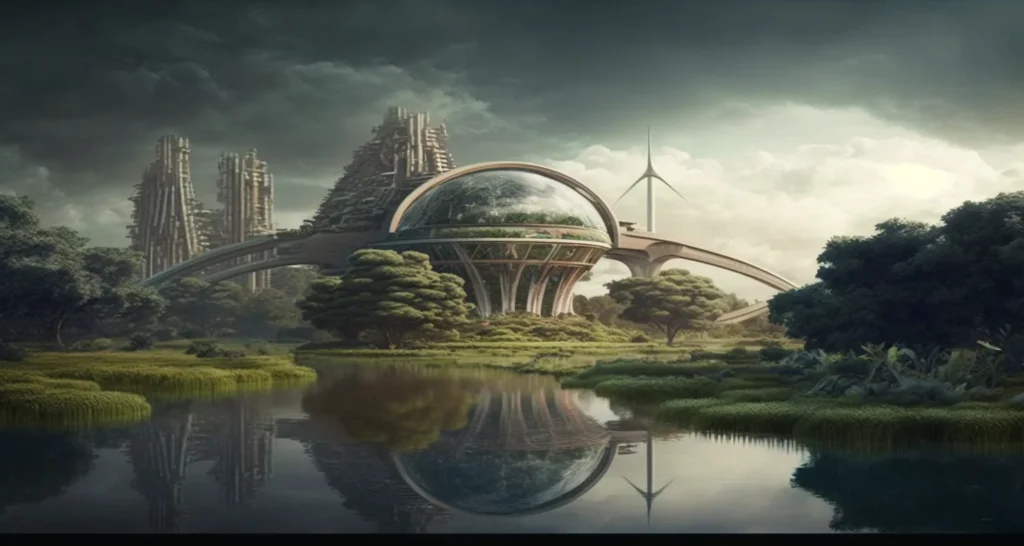There are two existing sources of energy in the world. One of them is historic and has been used ever since humanity started evolving. The other source of energy is also old but the recognition it received is fairly new. These are traditional and green energy sources and here are the clear-cut differences between them.
Traditional & Green Energy Sources
Traditional energy sources, also known as non-renewable or conventional energy sources, are sources that are finite and harmful for the environment. These sources have been in use for a very long time but they are slowly running out and it will take millions of years before they can be naturally ‘restocked’ by nature. These sources include fossil fuels (coal, oil, and natural gas) and nuclear fuels. Millions of years ago, when plants and animals died, they gradually became buried under layers of rock on the land as well as the sea. After millions of years and due to the pressure and heat of the surroundings, they broke down into organic matter which formed fossil fuels. Oil and natural gas were formed from aquatic plants and animals that were buried in the seabed while coal was formed from the waste of trees and plants under the same conditions. Apart from fossil fuels, nuclear energy is another non-renewable source of energy produced by extracting Uranium from the earth.
Green energy sources, also known as renewable energy sources, are sources that are infinite and are not harmful to the environment. These sources are new and hence their initial cost is expensive. However, these sources are naturally replenished by nature. These sources include wind, water, solar, geothermal, and biomass. Unlike traditional sources, green energy sources do not take millions of years to form. They are available at all times and even if they are used, their quantity remains endless.
Differences between energy sources
When compared with green energy sources, traditional sources generate more energy. In the U.S., 65% of electricity was generated by fossil fuels, 20% from nuclear energy, and 15% from green energy sources in 2016. This is because the world cannot survive completely on green sources right now. Traditional sources also receive more support from the government than green sources do. In 2011, more than $500 billion was given in subsidies to the traditional energy sector which is quite a large amount. The green energy sector received six times less than that amount in the same year. Some countries have a greater amount of water (rivers, seas, and oceans) and sunlight compared to others. It creates problems for them because they cannot generate as much energy as required by people. So, in those areas, traditional energy sources are a better option. Fossil fuels can be easily transported from one country to another. However, with the supply becoming smaller and smaller, it is harder to mine, extract, and search for coal, oil, and natural gas. Disputes have also emerged among countries because oil is present in a greater quantity in only a few places.
Since the government’s support for traditional sources is greater, investors prefer these sources. This, in turn, makes the market for traditional sources extremely profitable. Traditional energy sources are also cost-effective because the initial cost of green energy sources is high. But supporters of traditional energy do not consider the external cost of using fossil fuels. The external costs include pollution, climate change, and public health. According to the US Energy Information Administration, adding an external price to the existing coal price makes it 18 cents/kWh which is more than wind (8.19 cents/kWh), geothermal (9.18 cents/kWh), biomass (9.95 cents/kWh), and hydro (5.85 kWh).
Since fossil fuels contain carbon, heating them releases carbon dioxide. An excess of carbon dioxide in the atmosphere results in the greenhouse effect which is responsible for higher temperatures. In short, greenhouse gases cause climate change and global warming. Burning coal also releases toxic gases such as carbon monoxide. Some other environmental impacts include air and water pollution and oil spills which are harmful to aquatic life. The extraction of natural gas also results in a small scale of earthquakes. Even though nuclear energy releases no toxic gases, radioactive waste causes cancer and other diseases to anyone who is exposed to it. In comparison, green sources do not affect the environment. Since all the sources are naturally available, there is no need for extraction and mining. It also keeps the atmosphere clean from toxic gases. Furthermore, traditional energy sources require water for mining and cooling. Green energy sources require no water at all except for hydropower. But hydropower uses dams to collect rainwater and excess water that also helps in controlling floods.
What will happen in the future?
It is expected that by 2020, energy consumption in the world will increase by 50%. Right now, the energy being consumed per year is around 400 quadrillion British Thermal Units (BTUs). So, by 2020, it will be adding 207 quadrillion BTUs. In this case, fossil fuels will completely end within the next 104 years. It means that even supporters of non-renewable sources agree that the supply will eventually end. However, there is still a long way to go before the world collectively shifts from traditional energy sources to green energy sources.













